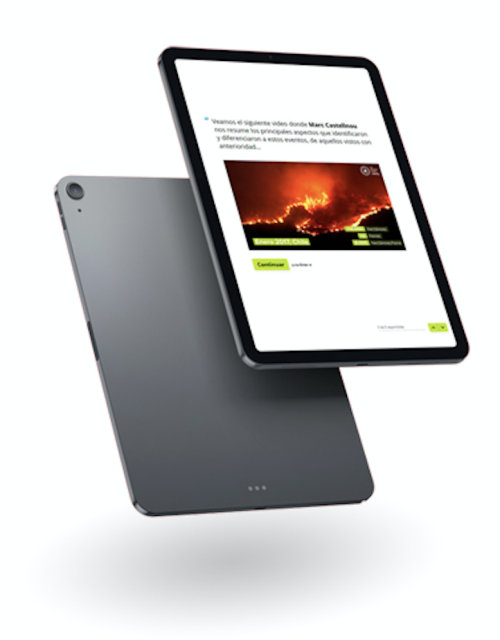TEP Operational Reasoning for Wildland Firefighters
Content
Module 1: Current context
Wildfire generations and current global context.
Module 2: Reading the fire.
2.1. Basic analysis.
- Phases of combustion, basic principles of fire physics.
- What is fire. What is a wildfire. The fire triangle.
- Phases of combustion: pyrolysis, ignition, exothermic reaction.
- Wildfire spread patterns - What does the wildfire WANT to do?
- How a fire spreads through the available fuels – Understanding what a fire CAN do?
2.2. Fire behaviour and Dynamics Level 1.
- Introduction to the meteorological factors that influence fire behaviour.
- Basic wind pattern classification and interaction with wildfires
- Fire spread patterns, how to classify what is influencing fire spread.
- Microtopography and its immediate effects on fire behaviour
- The fuel complex and its arrangement.
- Basic behaviour prediction system for wildland firefighters.
- Practical case studies: wind-driven spread pattern, topographic spread pattern and plume-driven spread pattern.
Module 3: Decision-making on first arrival
3.1. Introduction to the operative world.
- "What do I want to do and what can I do?". Wildfire fighting tools and classification of the different operational choices.
- Introduction to basic concepts in operations: the concept of strategy, tactical objectives, tactics, operations, and the wildfire “toolbox’.
- Simple and advanced operations, examples of combinations.
- Selecting areas to perform interventions and taking advantage of the window of opportunity.
- Do we have time and resources to achieve the objectives?
- Choosing the appropriate operation/action. UUS operations.
3.2. Hand tools operations
- Basic operations with hand and power tools.
- Types of hand tools and their use, basic organization using hand tools, direct attack, construction of hand lines.
- Operation objectives, description, methodology, and examples.
- Case studies and examples.
- Direct attack with hand tools, a case study in Galicia.
- Direct attack with hand tools - Argentina's example in saw line and control line.
- Advanced operations with hand and power tools.
3.3. Hose line operations.
- Equipment and requirements.
- Safety, logistics, and organization of hose line operations
- Proactive security actions.
- New concepts for the deployment: vision, mission, capability, and position.
- The LACES safety protocol and responsibility on hose lines deployment.
- Operation preparation on arrival at the fire: vision, mission, position, capacity.
- Basic hose line use and limiting factors
- Suppression capacity limitations for the hose line: rate of spread and fireline intensity.
- How to increase the rate of suppression using hose lines?
- How to increase suppression capacity?
- Organization and safety in tie-in points (TIP).
Module 4: Introducing “tactical architecture”.
- “Tactical architecture” and utilizing the opportunity windows of opportunity.
- Planning the correct time, place, and tactics to utilize during windows of opportunity
- Simple to complex operations: tactics designed to order operations. Showing a simple example of how to position our resources and with what capacity to face a fire at a particular time at a particular place (capacity, time and space concepts)
- Simple “tactical architecture” using basic hose line operations within simple scenarios: reasoning process in which any firefighting team may find itself on the first arrival. The analysis is to be made before the first intervention and the basic vision that any crew must have is to know how to read simple fire scenarios.
Module 5: Introduction to wildfire safety culture
- Safety planning operations.
- The LACES protocol and its relation to the fire, the scenario, and the operation situation.
- Understanding the scenario. Hazard indicators.
- LACES protocol - awarness relationship, 10 safety rules and 18 dangerous situations.
- Safety Culture.
- History and origin of security standards and protocols.
- Concept of Incident Command System (ICS).
- Lessons learned: how can the system collapsed and plan to address this.
- Basing strategy on the reduction of collapse scenarios.
- Operation level, working with an understanding of the factors that can lead to collapse and having an alternative plan.
- Lessons learnt: situational awareness in the operational environment.
3 Evaluation test.
2 First attack reasoning exercises
Open license
Sign up nowDownload Course Information


 Conversations with successful professionals
Conversations with successful professionals Downloadable materials
Downloadable materials Assessment tests
Assessment tests
